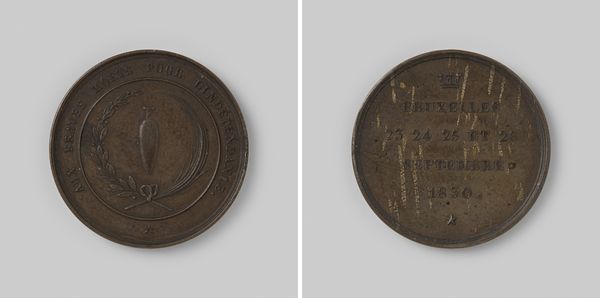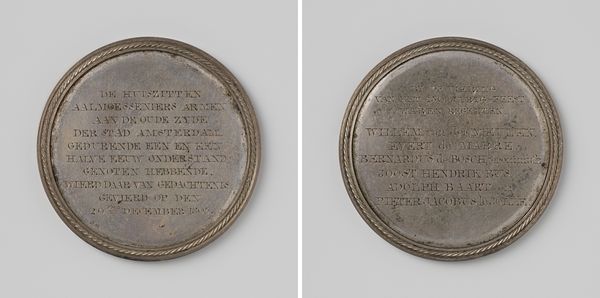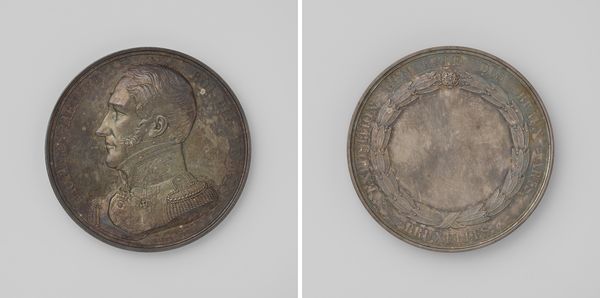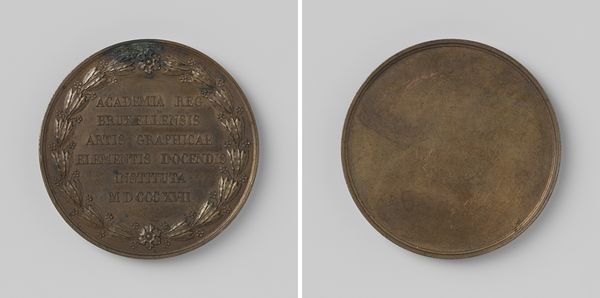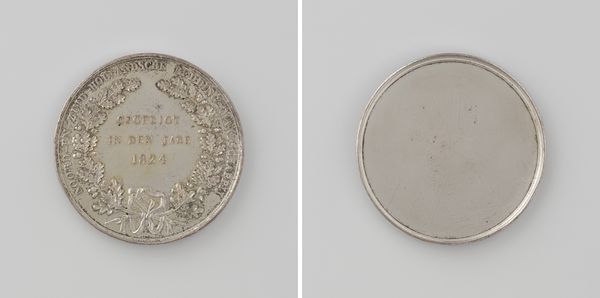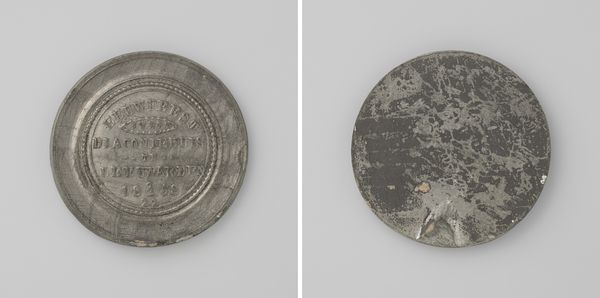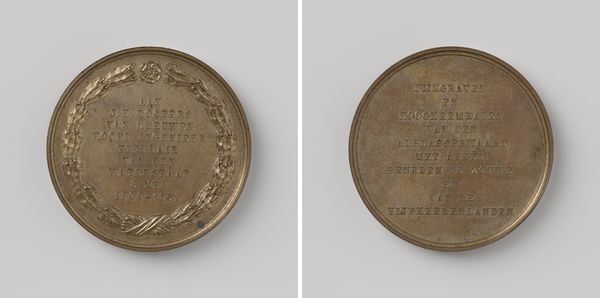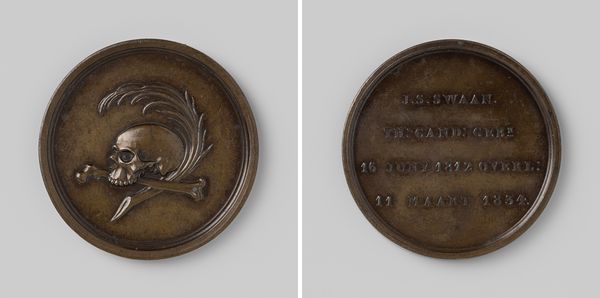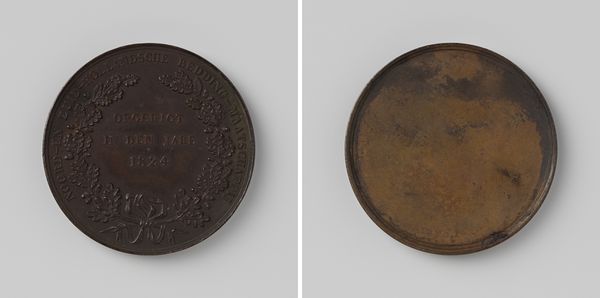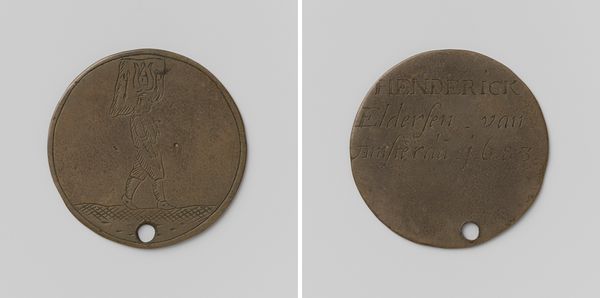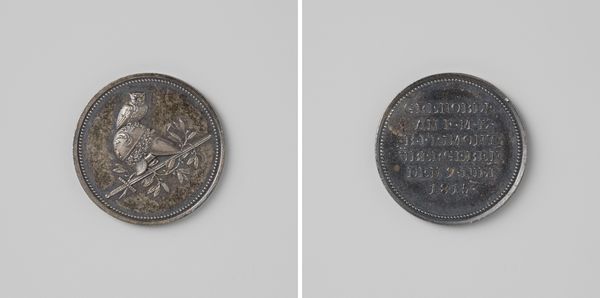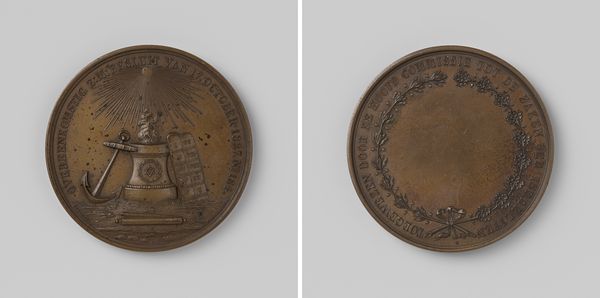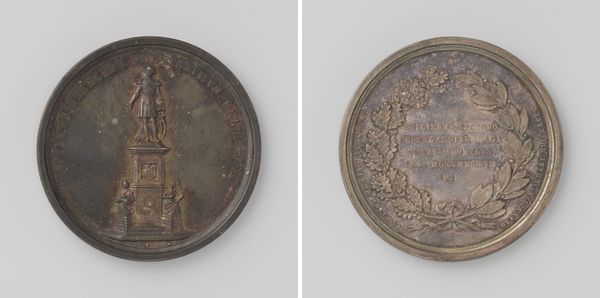
Akademie van 's-Hertogenbosch, penning uitgereikt aan J.H. de Groot, voor het tekenen naar pleister 1858
0:00
0:00
metal, relief, sculpture
#
portrait
#
medieval
#
metal
#
sculpture
#
relief
#
sculptural image
#
sculpture
#
ceramic
#
academic-art
#
statue
Dimensions: diameter 3.9 cm, diameter 3.8 cm, weight 11.32 gr
Copyright: Rijks Museum: Open Domain
Curator: Here we have a commemorative medal from 1858, made for J.H. de Groot by the Academie van 's-Hertogenbosch. It was presented as a prize for drawing plaster casts. Editor: It strikes me as rather austere. The silvery metal is a little worn, which adds to the somber mood, but the circular shape and the delicate rope edging offer some relief. Curator: Indeed. This medal echoes artistic values that connect us to medieval traditions of craft and commemoration. A circle itself is symbolic, isn't it? Eternity, completion… Think of its endlessness as a form, promising infinite reward for artistic merit. Editor: But beyond that elegant framing, consider how the inscription itself is rendered. There’s an almost relentless flatness to the lettering and minimal visual interplay, emphasizing information over artistry. It privileges functionality in form. Curator: Absolutely, but let’s also appreciate how it immortalizes De Groot’s accomplishment. Drawing from plaster casts was seen as a vital step toward mastering classical form and proportion – a crucial aspect of art education at the time. Receiving this would connect de Groot to generations of artists. Editor: While acknowledging those associations, the piece seems to me more a functional object—it seems less interested in being evocative. It's more a certificate than a sculpture, so to speak. Curator: I would disagree with you on that last point; the very material it is cast from gives it permanence. That’s more powerful than any paper certificate, as well as connecting to age-old archetypes of worth. Editor: An interesting point. I am left appreciating that balance. It seems, after all, that the functionality serves the deeper ambition toward conferring lasting value. Curator: Well said. Seeing the two faces like this truly offers insight into 19th-century methods and artistic achievement.
Comments
No comments
Be the first to comment and join the conversation on the ultimate creative platform.
